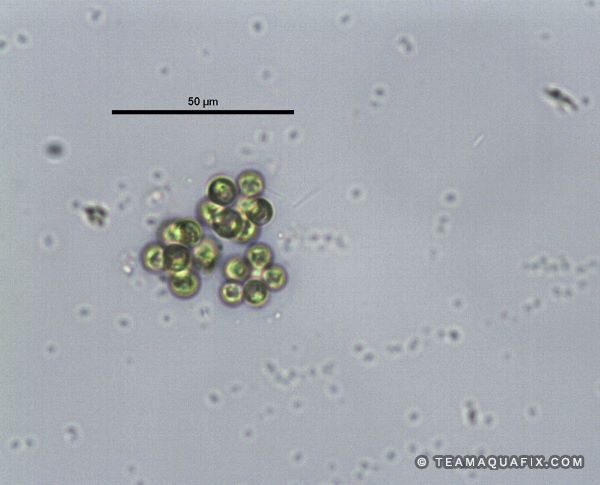
Chlorella-like algae are not found in aeration basins but rather within lagoon systems. They will contribute to elevated suspended solids and pH, but are helpful for the reduction of ammonia, phosphorous, and nitrate.
If Chlorella-like algae is an issue in a wastewater lagoon it can be treated with a chelated copper algaecide such as Argos, however, upon the treatment, it is likely to release high levels of nutrients and dead material into the water body. PondZilla Pro can help prevent negative effects in the wastewater lagoon effluent after chelated copper treatment. Many algae that grow in lagoons, such as Chlorella, are symptoms of high levels of sludge build-up and internal nutrient recycling. Sludge can be physically removed by dredging or a non-disruptive option: Sludge Rx. This can aid in sludge reduction and prevent resuspension of nutrients, such as nitrogen and phosphorus.
Chlorella-like algae can be found in wastewater polishing lagoons with high nitrate and phosphate levels as well as periods of increased sunlight. These are the optimal growing conditions for Chlorella. It also has a high tolerance to soluble organic compounds that are typically found in wastewater. Chlorella-like algae is a spherical, planktonic, genus of unicellular green alga that can sometimes form colonies. This alga ranges from 2 µm to 10 µm in diameter and has the ability to rapidly regrow. It is very difficult to identify because it has no significant identifiable traits in comparison to other similar small, single-celled algae. The only way to conclusively identify Chlorella-like algae is by observing its reproductive life cycle or through genetic testing.

39041 RGE RD 283,
Red Deer County, AB T4E 0M2
Phone: 1-888-466-0031 |
Fax: 1-888-507-9716
To place an order, please fill out the required fields below and proceed to checkout. Ensure all information is accurate, and feel free to contact our support team if you have any questions or need assistance. Thank you for choosing us!